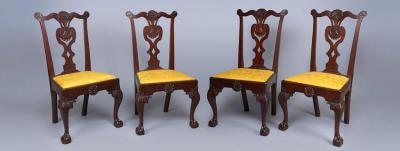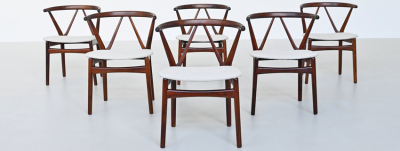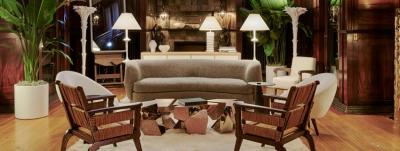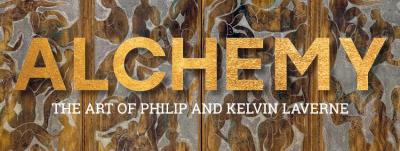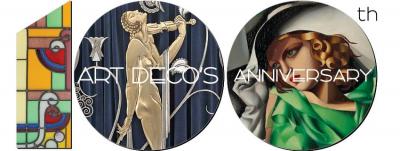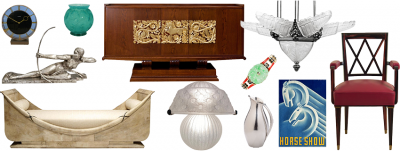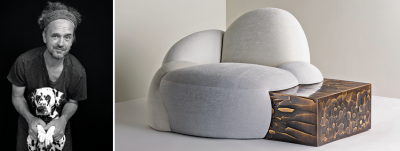JMW Turner's Most Passionate Defender
J. M. W. Turner, the blockbuster exhibition opening in July at The Metropolitan Museum of Art—a traveling show that started at the Tate Gallery in London and picked up some of the top Turner holdings on its way through the National Gallery in Washington, D.C., and the Dallas Museum of Art—is a reminder of the potency of art criticism. In one of the most successful examples of a writer’s intervention in art history, the brilliant and fanatical John Ruskin took on the establishment and helped garner support for the artist, attacked by critics who pronounced his mature style confusing and chaotic (Fig. 1), particularly in contrast to his early works, praised for their technical virtuosity and realism (Fig. 2).
The only child of Margaret and John James Ruskin, the future art and social critic John Ruskin (1819–1900) was a pampered Oxford sophomore (his mother had accompanied him to the university) when his father, a prosperous sherry importer who had begun to collect Turner’s art in depth, introduced him to the work of the painter. The London born J. M. W. Turner (1775–1851) had entered the Royal Academy of Art at age fourteen and had his first work, a watercolor, accepted for the Academy’s annual exhibition a year later. His first oil painting was exhibited in 1796 (Fig. 3). Trained as a topographical draftsman, Turner early made a name for himself through his picturesque land- and seascapes imbued with minutely rendered detail. As he matured, he developed an abstract style—usually described as the precursor to impressionism and modern art—where his expressive use of atmosphere, light, and color captured the elemental forces of nature, often obscuring the forms of his subjects in atmospheric effects (Fig. 4). These later works earned him the vilification of critics and the baffled public. Sir George Beaumont, an influential collector and amateur artist, claimed Turner “had done more harm in misleading the taste than any other artist.”
In the summer of 1836, Ruskin and his parents were at Chamonix, at the base of Mont Blanc (one of Turner’s favorite subjects), when young Ruskin read yet another harsh review of Turner’s work. That year the artist had exhibited three paintings at the Royal Academy. Among them was Juliet and her Nurse (Fig. 5), which Blackwood’s Magazine critic John Eagles described as “a strange jumble…thrown higgledy-piggledy together, streaked blue and pink and thrown into a flour tub.” The seventeen year-old Ruskin rose to the challenge. As he recounted in Praeterita (1886−1888), his unfinished memoir, “It put me in a rage and that forenoon I determined to write a pamphlet and blow the critics out of the water.” He began writing at four in the morning, expecting to be done by breakfast. Eighteen years and 2,500 printed pages later, Ruskin’s monumental five volume Modern Painters was a brilliant defense of Turner’s art and much more. In it Ruskin advanced his theories of beauty and imagination, ranging across every art medium and art form. His argument that Turner’s work was superior to that of the Old Masters because it was truer to nature had its origins in personal experience. A trained draftsman himself, Ruskin was drawing a sprig of ivy one day in 1841 when he experienced an epiphany, which he later described: “When it was done, I saw that I had virtually lost all my time since I was twelve years old, because no one had ever taught me to draw what was really there.”

- Fig. 3: Joseph Mallord William Turner (1775–1851), Fishermen at Sea, 1796. Oil on canvas, 36 x 48-1/8 inches. Courtesy of Tate, London; purchased 1972. © Tate, London. This was Turner’s first oil painting and was exhibited at the Royal Academy in 1796. It was among Turner’s highly praised early efforts.
Most of the major mid- and late-career Turner works on show at The Met this summer originally encountered the disdain of conservative connoisseurs. When Snow-Storm, Avalanche and Inundation (Fig. 6) was shown at the first annual salon held at the Royal Academy’s new home in Piccadilly, The Athenaeum sneered that calling it a picture “would be an abuse of language.” In the first volume of Modern Painters, Ruskin referred to it as one of Turner’s “mightiest works.” Snow Storm—Steam Boat off a Harbour’s Mouth (Fig. 7), another late masterwork, which had as its subject a steamboat setting out for sea in a raging storm, was dismissed by one reviewer as “soapsuds and whitewash.” Ruskin in turn asserted that it was “one of the very grandest statements of sea-motion, mist and light, that has ever been put on canvas, even by Turner,” and in Modern Painters helped to promote the almost certainly apocryphal story that Turner had persuaded the sailors to lash him to the ship’s mast in his Homeric quest to observe the full force of a storm.
Though he had his detractors in conservative critics of the day, Turner was a prominent member of the Royal Academy, of which he became deputy president in 1845. Thanks in part to the popularity of his champion’s books, Turner became the richest painter of his day. Turner for his part appears to have been underwhelmed by the young Ruskin’s fanatical devotion. As Ian Warrell, the Tate’s curator of eighteenth- and nineteenth-century British art, notes in his introduction to the exhibition catalogue, “Various anecdotes suggest that he was rather uncomfortable about his young admirer’s attempts to interpret his life’s work. Indeed, he was pointedly tardy in thanking Ruskin for his efforts, possibly believing he did not need to be promoted so vigorously.” Nevertheless, Turner named Ruskin one of the executors of his will, in which he left his finished paintings to the British nation.
Turner died in 1851 and the final volume of Modern Painters appeared in 1860, eagerly awaited by a steadily growing audience, not only across Europe, but also in the United States (where it was available in pirated editions). In matters of art and taste, Ruskin’s unstinting judgments guided a market stoked by a new breed of collectors remarkably more committed to contemporary art than Old Masters, who emerged from the merchant ranks to take the place of the aristocratic patronage of the generation before. Rising collectors like John Sheepshanks and dealers like Thomas Agnew took their cue from his reviews. A broader spectrum of the British middle class was visiting museums and tourist sites and hungry for Ruskin’s opinionated guidance. The Seven Lamps of Architecture (1849), the three-volume The Stones of Venice (1851, 1853) and The Bible of Amiens (1880) became the vade mecums of English travelers in Italy and France.
A Question of Ethics
Ruskin’s father chided him for never taking a penny in commission from Turner, or his canny dealer Thomas Griffith for promoting the artist’s work. Still, Ruskin’s competing roles as critic and power broker in the art world raised eyebrows among his later biographers, who have pointed to the extensive holdings of Turner’s work in the Ruskin household. Beginning with works on paper and culminating with the acquisition of Slave Ship (Slavers Throwing Overboard the Dead and Dying, Typhoon Coming On) (in The Met’s retrospective), bought by his father after the publication of the first volume of Modern Painters, the Ruskins had more than 300 of Turner’s works. The family’s considerable investment was therefore helped by the success of Modern Painters, which sold 300,000 copies in the first edition alone. By today’s standards, Ruskin’s was a clear case of conflict of interest, but his passionate defense of Turner makes it clear that money was never a motive and, besides, the rewards would scarcely have been enough to risk his prestigious post at Oxford or the good name of his family. Only once did he put a considerable batch of works on the market. He consigned forty-one works by Turner, including the magisterial Slavers, to Christie’s for sale on April 15, 1869, and received 5,648 guineas.

- Fig. 7: Joseph Mallord William Turner (1775–1851), Snow Storm: Steam Boat off a Harbor’s Mouth Making Signals in Shallow Water, and Going by the Lead. The Author Was in this Storm on the Night the Ariel Left Harwich, 1842. Oil on canvas, 36 x 48 inches. Courtesy of Tate, London; bequeathed by the artist, 1856. © Tate, London.
After Turner
Having used his pen to elevate Turner, Ruskin repeated his feat with the Pre-Raphaelite Brotherhood. Founded in 1849 by William Holman Hunt (1827–1910), D.G. Rossetti (1828–1882), and John Everett Millais (1829–1896) in reaction to the “frivolous art of the day,” the group believed that painting prior to Raphael had greater authenticity and was deeply influenced by Ruskin’s ideas about truth in art. After a harsh review of a breakthrough exhibition from Charles Dickens in 1851, Ruskin stepped up to defend them, helping to allay accusations of blasphemy and contributing to their subsequent popular success.
Although he abandoned art criticism in the 1850s, in 1878 Ruskin wrote a scathing review of the work of George Abbott McNeill Whistler ( 1834–1903). “I have seen, and heard, much of cockney impudence before now; but never expected to hear a coxcomb ask two hundred guineas for flinging a pot of paint in the public’s face,” he ranted in Fors Clavigera, a series of letters addressed to the British working man that appeared in four volumes in the 1870s. Whistler sued, and although Ruskin lost the case, was only required to pay a farthing in damages. The trial marked a changing of the guard. The new voices of the Aesthetic movement gained prominence, headed by Ruskin’s disciples Walter Pater (1839–1894) and Oscar Wilde (1854–1900), who echoed Ruskin’s high style, but in praise of art that has decidedly moved on from Ruskin’s tastes, which, latterly, had gravitated to the works of book illustrator Kate Greenaway. Ruskin died in January 1900, almost exactly a year before Queen Victoria (they were both born in 1819). As an arbiter of taste, he remains unsurpassed. J.M.W. Turner, is on view at The Metropolitan Museum of Art from July 1 through September 21, 2008. For information call 212.535.7710 or visit www.metmuseum.org.
As an arbiter of taste, he remains unsurpassed. J.M.W. Turner, is on view at The Metropolitan Museum of Art from July 1 through September 21, 2008. For information call 212.535.7710 or visit www.metmuseum.org.
Ruskin’s range of interests was enormous. In over 250 works, he wrote not only about art, but also about literature, science, the environment, and politics. His late writings on politics and economics influenced the creation of the Labour Party and Christian Socialism. Named the first Slade Professor of Fine Art at Oxford in 1869, Ruskin also taught at the Working Men’s College, a product of the Christian Socialist movement, founded in 1854 in London. His thoughts on design engendered the Arts and Crafts movement, and his influence on intellects—contemporary and to come—was immense. Marcel Proust, who translated many of his works into French, claimed to know them by heart.
Charles A. Riley II is a cultural historian and professor at City University, New York, whose two dozen books include Aristocracy and the Modern Imagination and Color Codes.























